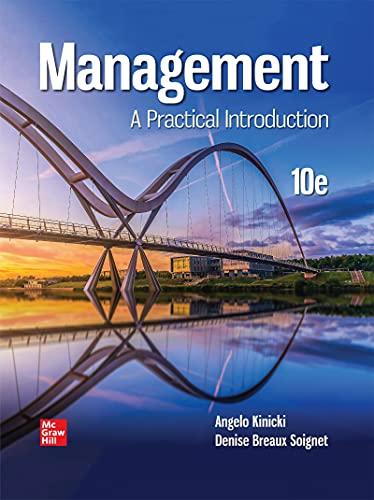Colleges and universities typically earn revenue from tuition, state taxes, and donations. The contribution from state taxes
Question:
Colleges and universities typically earn revenue from tuition, state taxes, and donations. The contribution from state taxes has been decreasing, creating a funding problem for many colleges and universities. This challenge focuses on a new source of revenue for campuses around the United States: the selling of bank accounts to students. Wells Fargo, U.S. Bank, and other financial institutions have signed a number of deals with schools in order to promote their banking services. The strategy is for banks to come to campus and pitch their services to students, with schools receiving royalties from the banks based on the number of new accounts students open. These royalties can sometimes be as high as hundreds of thousands of dollars annually, according to The Wall Street Journal.150 Do you think the schools are working on behalf of their students or the banks?
Banks may be eager to pay royalties to schools because they represent a lucrative target market—young adults often strapped for cash. Students may not have enough in their accounts to cover nonacademic expenses like trips and off-campus meals. Banks often provide overdraft protection when student accounts are a bit short. This protection actually works like a high-cost loan, and banks can raise substantial revenue from the interest and fees they charge. In fact,
the Consumer Financial Protection Bureau (CFPB)
estimates that consumers pay $17 billion in overdraft fees annually.151 The CFPB also found that the 482,000 college students at institutions with paid promotional agreements with banks paid more than three times the amount of fees, compared to the 839,000 students at colleges without such relationships.
“Anyone that looks at this data and the extent to which large banks continue to team up with colleges and universities to gouge the student body with overdraft fees should be outraged,” says a former CFPB student loan ombudsman.152 Students are receiving benefits for these fees. Many schools allow them to conveniently link their campus identification cards to banking services. Others actually allow a contracted bank to open a location on campus.
These strategic relationships also allow the banks to offer special accounts for students. For example, a U.S. Bank spokesperson said the bank wants to build long-term relationships with students “by providing them with the best student banking account in the marketplace.”153 The bank does offer a student checking account with no monthly fees, but students still incur overdraft charges and non-U.S. Bank ATM fees after the first four transactions.154
Banks claim that schools benefit from the arrangement just as their students do. “Schools are looking for funding,” says the head of PNC’s university banking program. Schools receive that funding in return for allowing banks to set up tables at campus events, advertise their products in mailings to students, and be known as the school’s preferred banking option. The Wall Street Journal found that 112 U.S. colleges received nearly $18.7 million in 2017 for these types of activities. Much of it was in the form of royalties, but some schools even receive a cut of the banks’ fees.155
Consumer watchdogs are concerned about schools receiving any sort of incentive from banks in return for promoting them. This concern is magnified by the troubled history of banks and universities. In the early 2000s, some financial aid offices were steering students toward loan packages that provided kickbacks to administrators. Other schools were suspected of pitching credit cards with deceptive offers or illegal incentives.
156 New laws were passed to address this bad behavior, but most do not extend to checking or debit accounts.157
Questions
What would you do if you were a university president and a bank approached you?
1. Sign a contract that provides the university with an incentive for each account opened. Both the university and bank are providing students with special benefits.
So it is all right if the school is compensated based on volume.
2. Sign a flat-fee contract only. Schools should not receive an incentive for each account opened, but they should be compensated for allowing the bank to have an increased presence on campus.
3. Refuse to sign a contract. Schools should be neutral parties and not be promoting banks.
4. Invent other options.
Step by Step Answer:

Management A Practical Introduction
ISBN: 9781260735161
10th Edition
Authors: Angelo Kinicki, Denise Breaux Soignet





